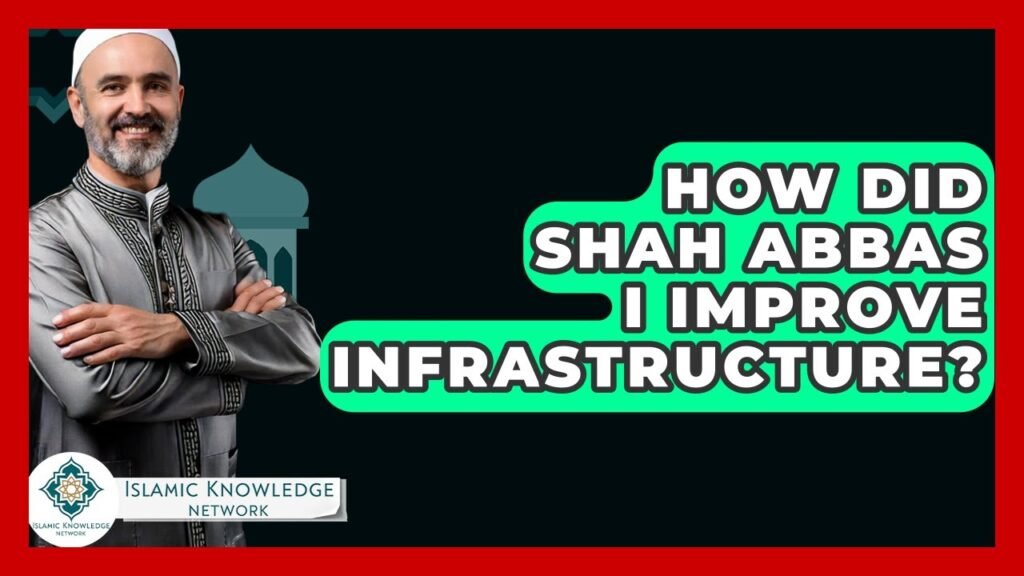You are here to read: How Did Shah Abbas I Transform Infrastructure in Persia? – A Thoughtfully Written Guide Offering Spiritual Wisdom and Travel Advice for Every Pilgrim who is going on holy journey of Hajj or Umrah.
Introduction
Shah Abbas I, one of the most illustrious rulers of the Safavid dynasty, played a transformative role in shaping modern Iran through significant improvements in infrastructure. His vision extended beyond mere territorial expansion; he sought to establish a robust framework that would facilitate trade, enhance urban life, and solidify his empire’s standing in the world. From the development of roads and bridges to the establishment of caravansaries, Abbas I laid the groundwork for economic prosperity and cultural exchange, thereby ensuring his legacy endured through the ages.
At Airlink Hajj and Umrah, we understand the importance of historical context in enhancing the spiritual journeys of millions undertaking pilgrimage. Just as Shah Abbas I invested in infrastructure to foster connectivity and unity in his realm, we too are dedicated to providing you with the most up-to-date information on Hajj and Umrah logistics. Our blog features comprehensive updates, travel tips, and insights that cater to your pilgrimage needs, ensuring a seamless experience as you embark on your sacred journey. Join us as we delve into the remarkable ways Shah Abbas I revolutionized infrastructure and explore how these historical advancements continue to influence modern travel.
How Did Shah Abbas I Transform Infrastructure in Persia?
Shah Abbas I, the great Safavid ruler of Persia from 1588 to 1629, played a pivotal role in transforming the region’s infrastructure, significantly enhancing the country’s economic and cultural landscape. His ambitious projects included the construction of roads, bridges, and caravanserais, which facilitated trade and improved connectivity across Persia. These developments not only bolstered commerce but also invited foreign merchants, establishing Persia as a vital hub along the Silk Road.
One of Shah Abbas’s most remarkable achievements was the redesign of the capital city, Isfahan. He transformed it into an architectural marvel, featuring grand palaces and stunning mosques that exemplified Persian artistry. This urban development attracted artisans and intellectuals, creating a vibrant cultural scene that still resonates today. The Safavid dynasty’s legacy is reflected in Isfahan’s breathtaking architecture, which continues to draw visitors from around the world.
In addition to these efforts, Shah Abbas I improved irrigation systems, ensuring better agricultural productivity. This holistic approach to infrastructure not only benefited the economic stability of Persia but also enhanced the quality of life for its citizens. For those planning pilgrimage journeys, our blog at Airlink Hajj and Umrah provides all the latest updates on Hajj and Umrah, allowing travelers to experience this rich cultural heritage amidst modern conveniences.
You're at the middle of this awesome post at AirlinkHajjandUmrah.com through: How Did Shah Abbas I Transform Infrastructure in Persia?. Keep reading, it gets better!
FAQ on How Did Shah Abbas I Transform Infrastructure in Persia?
FAQs on Shah Abbas I and His Infrastructure Transformations
1. What specific infrastructure projects were initiated by Shah Abbas I in Persia?
Shah Abbas I focused on building roads, bridges, and caravanserais to enhance trade routes. He also developed urban areas, notably Isfahan, with palaces, gardens, and mosques.
2. How did Shah Abbas I’s infrastructure changes impact trade in Persia?
By improving roads and creating a network of caravanserais, Shah Abbas I facilitated commerce, allowing for easier and safer transport of goods, which boosted the economy and engaged Persia more deeply in international trade.
3. What role did architecture play in Shah Abbas I’s vision for infrastructure?
Shah Abbas I emphasized Persian architecture, commissioning grand buildings such as the Shah Mosque and the Ali Qapu Palace, which not only enhanced urban aesthetics but also symbolized the power and culture of his reign.
4. How did Shah Abbas I address water supply and management in cities?
He improved urban water supply systems by establishing canals, known as "qanats," for irrigation and drinking, thereby increasing agricultural productivity and supporting urban populations.
5. What was the long-term impact of Shah Abbas I’s infrastructure initiatives on Persia?
His infrastructural developments laid the groundwork for a more connected and prosperous empire, influencing the administrative organization of cities and enhancing cultural exchanges that shaped Persia’s future.
That wraps up How Did Shah Abbas I Transform Infrastructure in Persia?. Thanks for sticking with us till here! Share this: How Did Shah Abbas I Transform Infrastructure in Persia? with your friends.
Check our homepage at Air Link Hajj & Umrah for more awesome updates.
Some interesting posts are: 1: Umrah Mubarak, 2: When is Umrah closed 2026?, 3: When does Umrah start after Hajj 2026?
Mushu, an experienced Saudi Arabia traveler and writer, shares insightful tips and spiritual reflections to enhance Hajj and Umrah journeys for fellow pilgrims. He has been to Makkah and Madina from 2016 to 2023 many times and his posts will reflect this.







